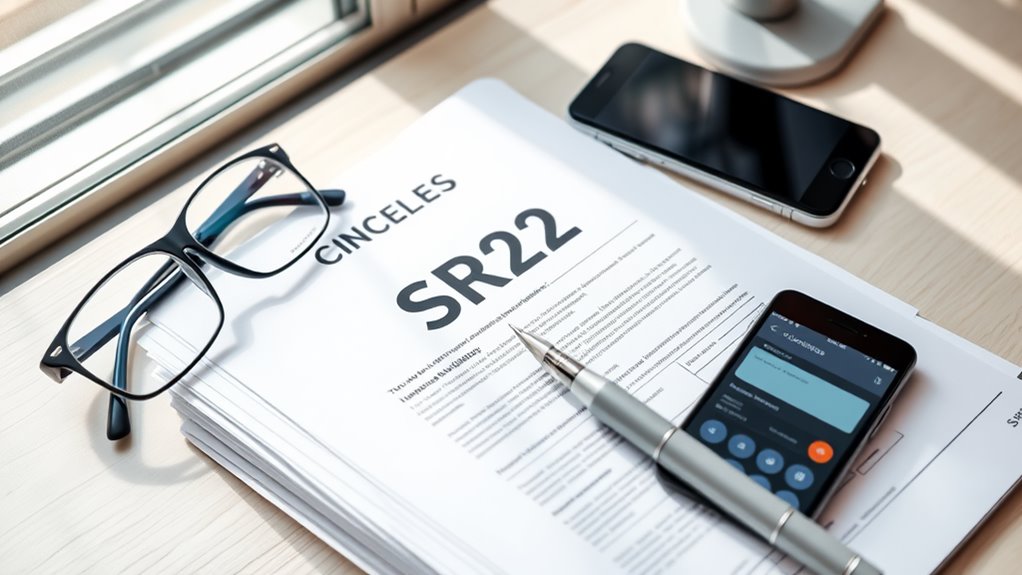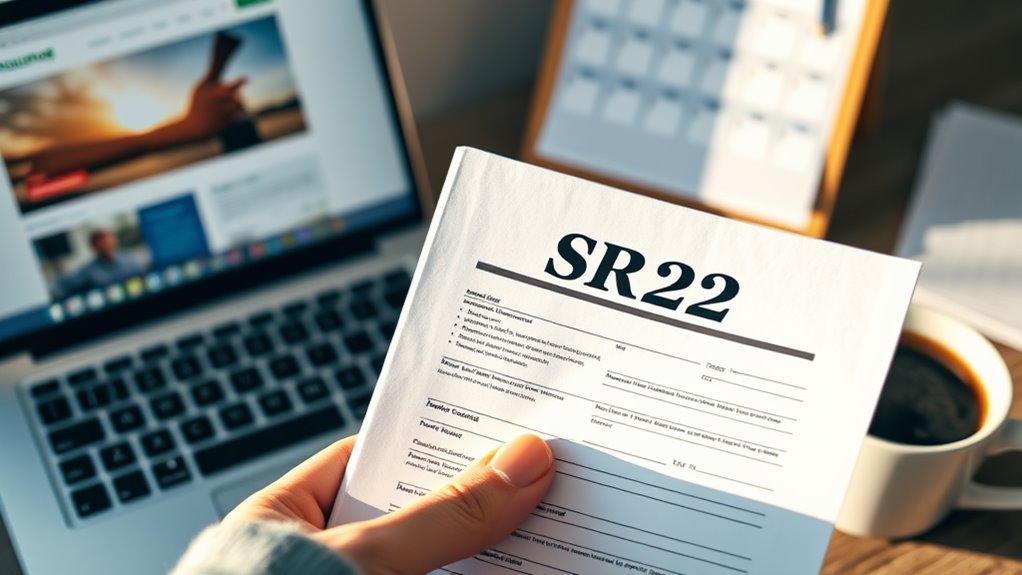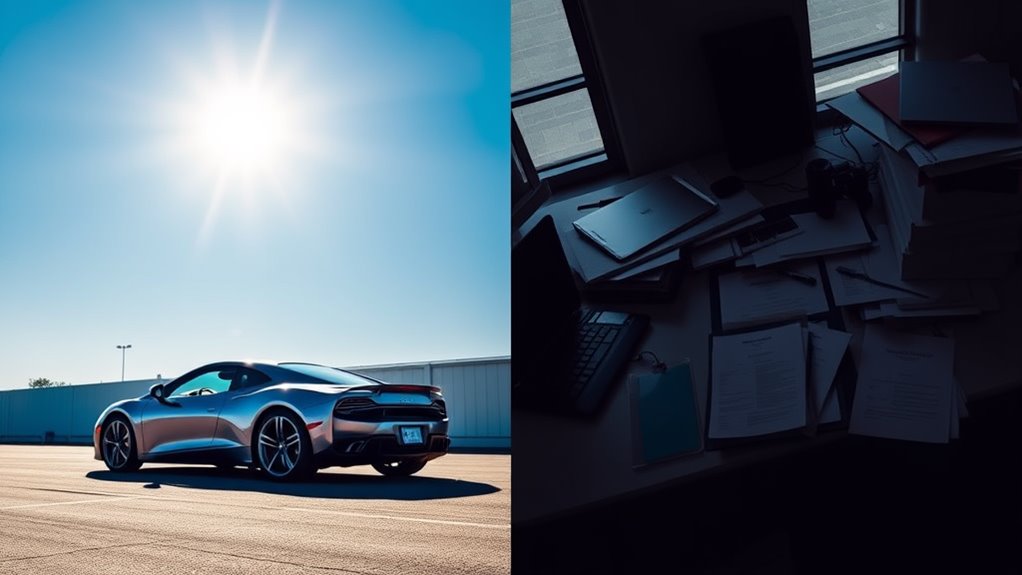If you need fast SR-22 insurance, managing the process efficiently is vital. Start by reaching out to your current insurer to see if they can handle SR-22 filings. You'll also need to gather specific documentation and consider adjustments to your policy. Each step can impact your timeline and costs. Understanding what comes next can save you both time and money, so let's break down the essential steps to streamline your SR-22 insurance experience.
Key Takeaways
- Contact your current insurer to confirm if they handle SR-22 filings and meet state minimum liability coverage requirements.
- Gather necessary documentation, including identification, vehicle information, and proof of insurability for non-owner SR-22 policies.
- Adjust your policy as needed, exploring coverage levels, SR-22 types, and potential discounts to manage costs as a high-risk driver.
- Complete the state filing process, ensuring you choose an insurer that offers SR-22 options and utilize electronic filing for faster processing.
- Verify with the DMV that your SR-22 is properly filed and check the filing status regularly to avoid penalties or license suspension.
Contact Your Current Insurer
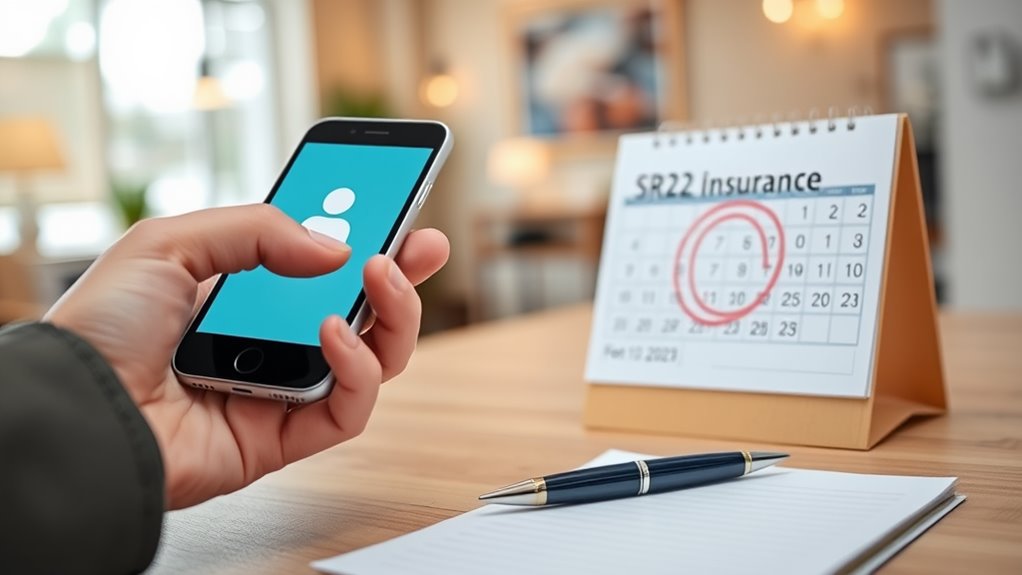
When you're facing the need for SR-22 insurance, the first step is to contact your current insurer. Not all insurance companies handle SR-22 filings, so it's essential to confirm their eligibility.
Contact your current insurer first, as not all companies manage SR-22 filings. Confirm their eligibility and requirements.
Ask if your policy meets the state's minimum liability coverage requirements and whether any adjustments are necessary. Additionally, inquire about potential increases in premiums due to your high-risk status. SR-22 insurance typically incurs extra costs, including a filing fee that ranges from $15 to $25. Maintaining continuous coverage is important; lapses can lead to penalties or license suspension. Continuous coverage is crucial during the SR22 period to avoid further complications with your driving privileges. Furthermore, it's beneficial to understand that SR-22 insurance is not actually a type of insurance but rather a certificate of financial responsibility that your insurer files with the state.
Clear communication about your needs and the SR-22 process guarantees you understand all requirements and avoid unexpected complications down the line.
Gather Required Documentation
After confirming your current insurer can handle SR-22 filings, the next step is to gather the required documentation.
Start by collecting identification documents, ensuring the name and address on your SR-22 application match your driver's license and vehicle registration.
Check your state's minimum liability insurance requirements and review any past convictions that necessitate the SR-22. Provide accurate vehicle information, along with the start and end dates of your insurance policy.
Additionally, determine the costs involved, including filing fees and potential increases in premiums.
If you don't own a vehicle, prepare proof of insurability for a non-owner SR-22 policy. This documentation will streamline the process and help you stay compliant with state regulations.
Adjust Your Policy as Needed
Adjusting your insurance policy is crucial, especially if you've recently obtained an SR-22. As a high-risk driver, your premiums are likely higher, so regularly reviewing your coverage levels can help manage costs.
Understand the types of SR-22 policies—operator/non-owner, owner, and operator/owner—as each affects your premium rates differently. Confirm your coverage meets state-specific requirements to keep it valid.
Also, don't overlook potential discounts; many providers offer savings for military service, driving safety course completion, or anti-theft devices. Inquire about these options, as they can greatly reduce your costs.
Finally, consider bundling your SR-22 with other insurance policies to enhance coverage and convenience while potentially lowering your overall expenses.
Complete the State Filing Process
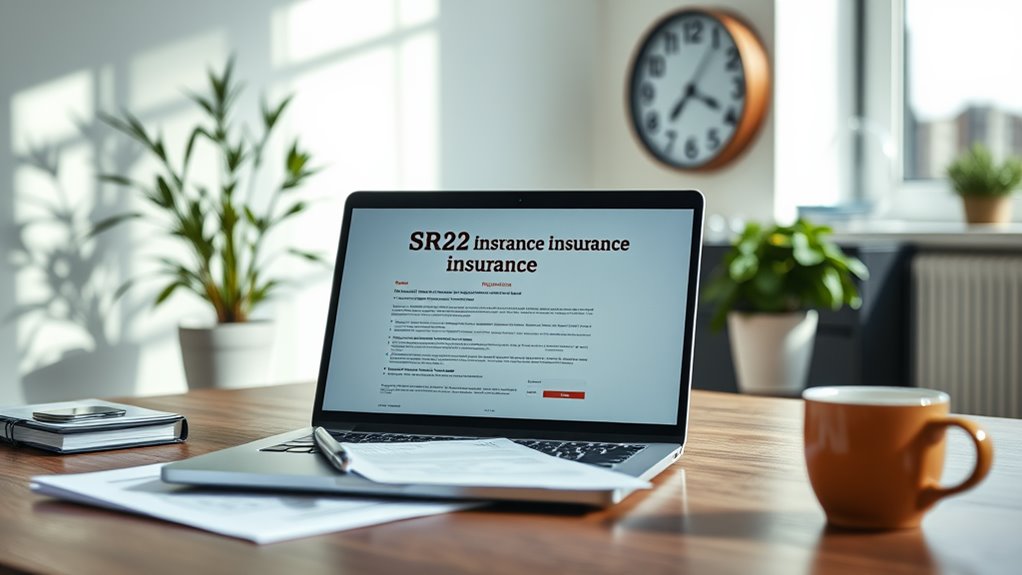
Completing the state filing process for your SR-22 is essential to guarantee you're compliant with legal requirements.
Start by confirming if you need an SR-22 due to court orders or DMV notifications. Choose an insurer that offers SR-22 options in your state, as requirements can vary based on your incident or conviction date.
Many states allow electronic filing, which speeds up the process considerably. After submitting your SR-22, wait for the DMV to update their records and confirm your status.
Keep in mind that some states may have additional requirements, like fees or courses. Always maintain a copy of your SR-22 certificate for proof of compliance throughout the required period.
Verify Filing With the DMV
Once you've filed your SR-22 with the state, verifying the filing with the DMV is essential to guarantee you're on the right track.
This step assures your SR-22 documentation is properly filed and reflects your current insurance coverage. Checking your filing status can prevent penalties or license suspensions due to non-compliance.
Confirming your SR-22 filing ensures accurate documentation and compliance, helping you avoid potential penalties or license suspensions.
Use online portals or contact your insurer to confirm the status, as the DMV maintains centralized records of SR-22 filings.
Be aware that SR-22 requirements typically last three to five years, and any changes in your policy must be communicated to the DMV.
Regular verification helps maintain compliance, which can ultimately influence your future insurance rates. Stay proactive to avoid unexpected issues.
Maintain Continuous Coverage
Maintaining continuous coverage is essential not only for meeting SR-22 requirements but also for protecting your financial future. A consistent insurance history helps you avoid penalties and potential license suspension, while also reducing future premium rates.
Insurance companies favor drivers with uninterrupted coverage, potentially offering better rates and terms. Lapses can reset your SR-22 term, forcing you to restart the mandatory period and increasing your insurance costs.
To guarantee continuous coverage, consider setting up autopay for premiums and monitoring any changes to your driving record. Keeping an emergency fund for unexpected increases is also wise.
Notify Your Insurer When Requirement Ends
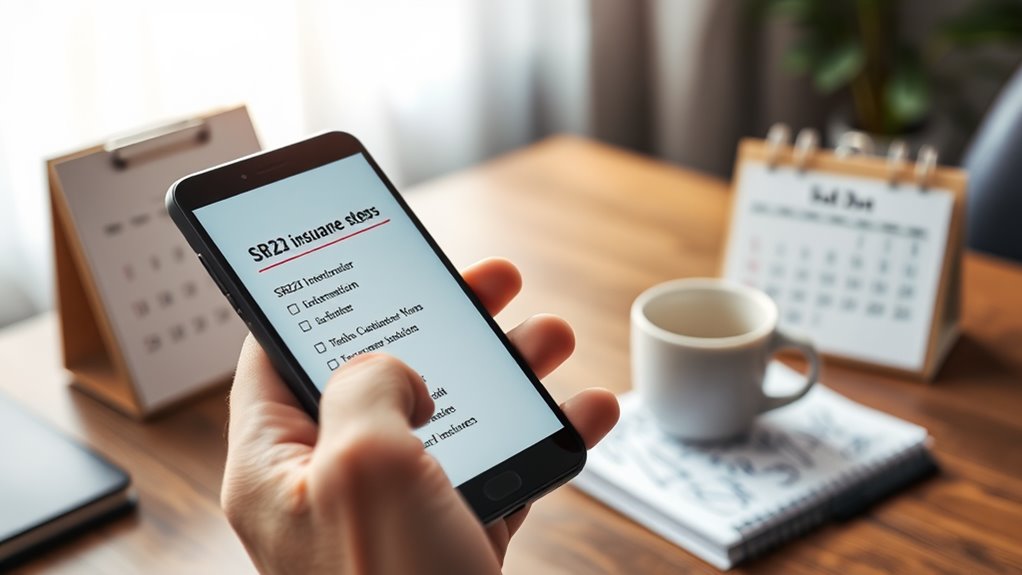
As your SR22 requirement comes to an end, notifying your insurer is essential to initiate the cancellation process. This requirement typically spans 1 to 5 years, depending on state laws, and it won't end automatically.
If you fail to inform your insurer, you might face unnecessary policy continuance and financial penalties. Start by confirming with your local DMV that your SR22 obligation has been fulfilled; a simple phone call or documentation often suffices.
Once confirmed, contact your insurer to provide the end date for your SR22 coverage. You may need to fill out a formal cancellation form.
Contact your insurer to provide the end date for your SR22 coverage and complete any necessary cancellation forms.
Finally, verify you receive written confirmation of the cancellation to avoid future complications.
Conclusion
In just a few simple steps, you can secure your SR-22 insurance faster than a lightning bolt striking the ground! By contacting your insurer, gathering your documents, and adjusting your policy, you're on the fast track to compliance. Once you file with the state and verify with the DMV, you'll feel like you're dancing on clouds, free from penalties. Don't forget to keep your coverage active and notify your insurer when you no longer need the SR-22—it's a smooth ride ahead!





